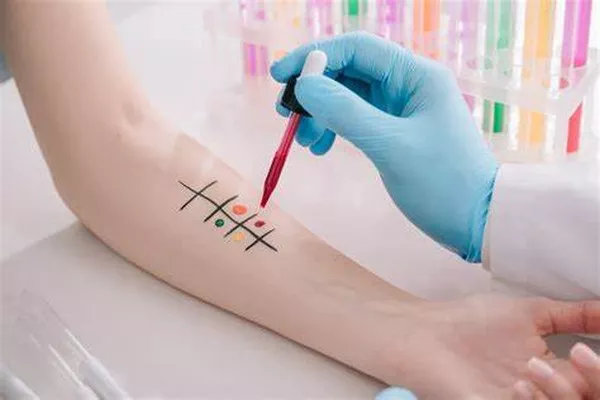Food allergies can swiftly turn a routine meal into a life-threatening ordeal. Anaphylaxis, a severe allergic reaction characterized by symptoms like skin rashes, nausea, vomiting, difficulty breathing, and shock, sends an alarming 200,000 individuals to emergency rooms annually in the United States due to food allergies.
Given the potential gravity of food allergies, the accuracy of diagnosis is of paramount importance. Traditional methods like skin and blood allergy tests have exhibited high false positive rates, making oral food challenges the diagnostic gold standard.
Oral food challenges involve patients ingesting increasing doses, up to a full serving, of the suspected food allergen while under medical supervision. However, this method, while highly accurate, can sometimes trigger anaphylaxis, necessitating an emergency epinephrine injection.
In a significant development, a team of researchers from the University of Michigan has devised a novel method that gauges skin water loss to predict anaphylaxis during oral food challenges before it becomes clinically evident. Their findings have been published in The Journal of Clinical Investigation.
Dr. Charles Schuler, the lead author of the study and an immunologist at Michigan Medicine, explains, “This method could enhance the ability to detect and predict anaphylaxis during oral food challenges prior to the need for epinephrine, greatly improving patient safety and comfort.”
Building on Previous Research
During anaphylaxis, the dilation of blood vessels causes increased heat and water loss from the skin. Prior research has explored facial thermography, a technique that employs a specialized camera to detect heat patterns emitted from the skin, as a method to predict anaphylaxis.
However, this method has its limitations, requiring optical expertise, tightly controlled conditions, and the patient’s cooperation in remaining still for an extended period. Consequently, it is not an ideal choice, especially for assessing food allergies in children.
The researchers validated the use of transepidermal water loss, a measurement that quantifies the amount of water escaping from a specific skin area per hour. They compared its ability to detect anaphylaxis with biochemical and clinical observation methods.
Their findings revealed that transepidermal water loss increases during food allergy reactions and anaphylaxis. The escalation in skin water loss correlated with biochemical markers of anaphylaxis and notably preceded clinical detection.
Dr. Schuler notes, “Transepidermal water loss measurement can be done in the office without specialized equipment, affixed to the skin, and works in children, making it a vast improvement from previous attempts at early anaphylaxis detection methods.”
Schuler’s research group is currently recruiting participants aged 6 months to 5 years for a pilot clinical trial, “Predicting Peanut Anaphylaxis and Reducing Epinephrine.” This trial monitors transepidermal water loss from the forearm during a peanut allergy food challenge. The results aim to establish values associated with anaphylaxis, potentially leading to predefined criteria for concluding oral food challenges, with the hope of reducing the necessity for epinephrine injections.


